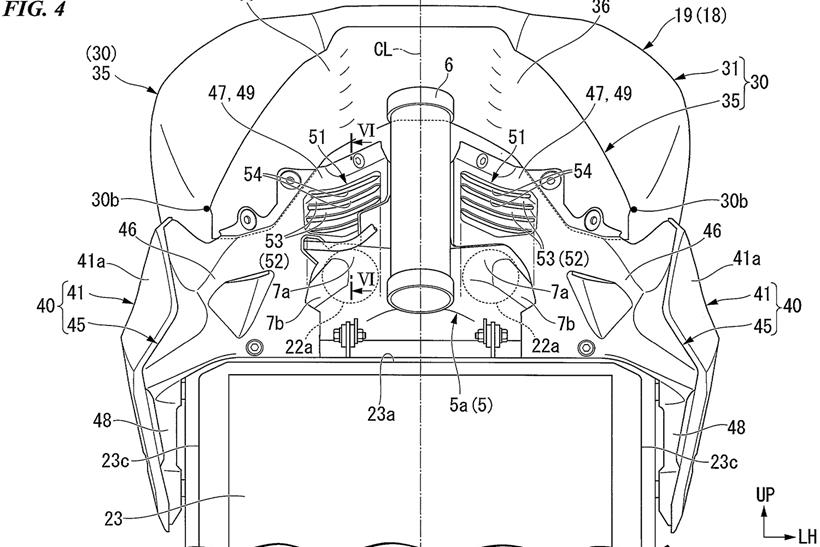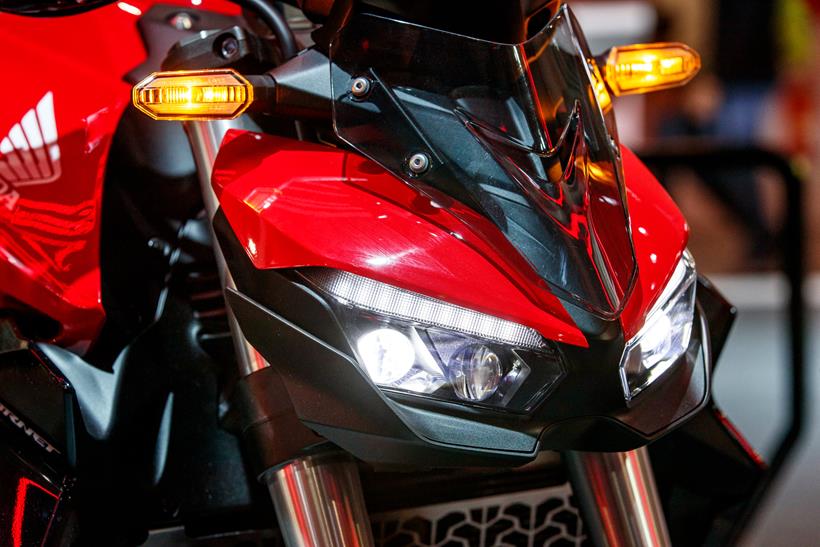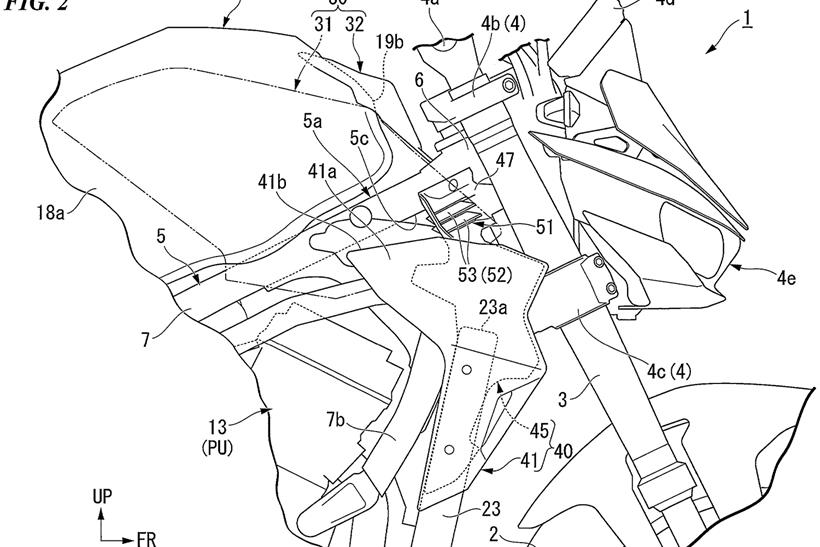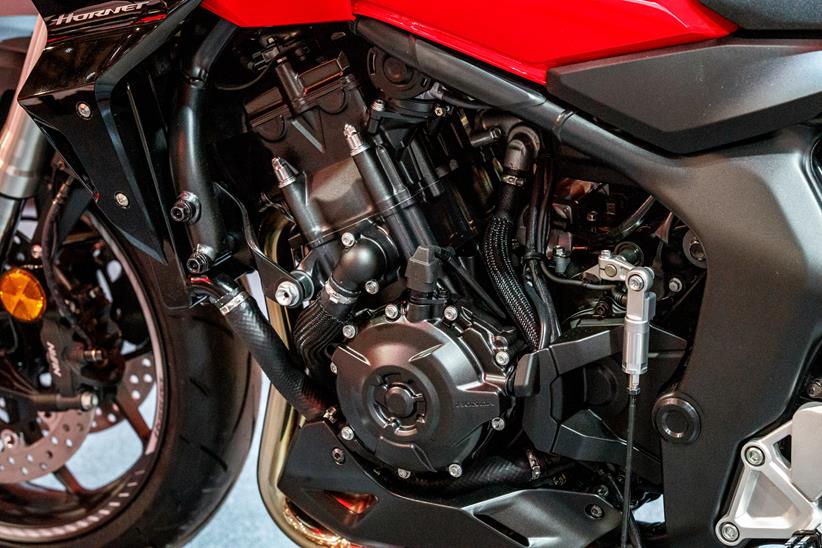Clever air intake design brings more zing and better soundtrack to upcoming CB1000 Hornet
Although Honda’s CB1000 Hornet was first shown late last year, the company are yet to announce detailed technical specifications or pricing.
In fact, all we really know is that it’s due later in 2024 with in excess of 148hp and more than 74lb.ft of torque, using an engine based on the 2017 CBR1000RR Fireblade.
That means it will likely outgun the existing Honda CB1000R, but it’s also expected to be more affordable, ditching fripperies such as the single-sided swingarm and opting for a more modern style instead of the R’s so-called ‘neo-retro’ look.

But how do you make a bike both faster and cheaper? By finding simple-yet-effective engineering solutions – and one of those fixes can be seen in the air intakes, which have been detailed in a new patent.
Getting a smooth flow of cool, high-pressure air into a bike’s airbox has always been an easy win when it comes to adding performance, as evidenced by the ubiquitous ram-air intakes on the noses of superbikes, but it’s not easy on a naked without complicated ducts that can mar the styling.
- Related: Honda CB750 Hornet review
The Hornet’s solution is to place those intakes behind the upper parts of the forks, one on each side of the steering stem, and to feed the air through the gap between the upper and lower rails of the tubular chassis and straight into the airbox.

A combination of the small headlight cowl, which smooths airflow ahead of the fork legs, and the forward-jutting panels attached to each side of the fuel tank helps draw air towards the intakes.
It’s a solution that ticks the ‘simplicity’ box but doesn’t come without pitfalls, and that’s where Honda’s patent application comes in. While the intakes are well positioned to convey air into the engine, assisted by the bike’s bodywork, there are two key problems.
The first is that having been wrangled from the nose of the bike and around the forks, the air being directed towards the intakes becomes turbulent.

The second is that the air feeds straight back and downwards into the airbox; a direct route but one that means rain or spray could sneak in, soaking the air filter.
Honda’s answer to both problems is the addition of three louvres across the intakes, angled down at the front and up at the back.
These have a dual purpose: straightening the messy airflow before it enters the airbox while simultaneously ensuring rainwater is deflected down and away from the intakes, eliminating the two key weaknesses of the intake’s positioning without adding substantial cost or complexity.

There’s an additional bonus to the design, too. By putting the intake openings just below the top yoke, it’s easier for the rider to hear the engine’s intake sound (while keeping overall noise levels low).
Yamaha have also focused on routing intake sound to the rider on the MT-09, using a series of chambers between the airbox and the top of the tank, but it’s a far more complex design that again has to find a way to route rain away.










